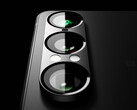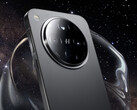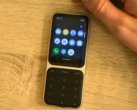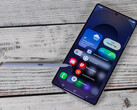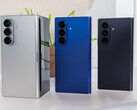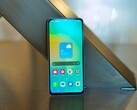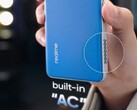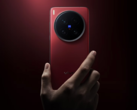The Nothing Phone (3) is Nothing's most powerful smartphone to date. It's not a flagship smartphone, even though the manufacturer touts it as such. The 6.67-inch smartphone lacks features such as Qi2 support and a higher-quality protective glass for the AMOLED panel (only Gorilla Glass 7i).
In addition, the screen is not an LTPO AMOLED (low-temperature polycrystalline oxide), but an LTPS display (low-temperature polycrystalline silicon). Instead of a dynamic refresh rate that adjusts continuously between 1 and 120 Hz depending on the content, the Nothing Phone's (3) LTPS display only operates at fixed intervals (60, 90 and 120 Hz). Hence, it is less efficient and so less power-efficient than its LTPO counterpart.
Hardware compromises make it slightly cheaper than a true flagship
In everyday use, the minor hardware compromises are hardly noticeable. This is in line with Nothing's design, as the Nothing Phone (3) is intended to feel like a flagship without actually being one. No corners have been cut with the rest of the hardware, which is also reflected in the price.
The Nothing Phone (3) starts at $799. This includes the 6.67-inch smartphone in white or black with 12 GB LPDDR5X RAM and 256 GB UFS 4.0 storage. If you add $100, you get the larger storage version with 16/512 GB. Both feature the fast Snapdragon 8s Gen 4, which is the cheaper and not-quite-as-fast alternative to the Snapdragon 8 Elite.
In addition to its high performance and bright, color-accurate AMOLED display, the Nothing Phone (3) offers several other selling points. These include its excellent camera system, consisting of a 50 MP main camera, a 50 MP ultra-wide-angle, a 50 MP telephoto, and 50 MP selfie camera. Its 5150 mAh battery provides a full day of intensive use and can be charged in under an hour. The software support is also impressive.
The Nothing Phone (3) will also get Android 20
Nothing ships its smartphone with Nothing OS 3.5, which is based on Android 15. In addition to five years of OS upgrades up to Android 20, seven years of Android security updates are also promised. Nothing plans to provide the latter every two months.
Nothing OS 3.5 expands the standard Android with a sleek and clear user interface. In addition to its own AI hub (Essential Space), it also offers a number of other practical extras. For example, the Android quick settings icons can be resized. In the Photos app, you can also swipe up to select from various camera presets. In addition to the Google search field, there's a second search field in the app drawer called Essential Search, which allows you to search the smartphone for content. Users can also initiate an AI-supported online search by tapping the yellow icon next to the search field.
The Glyph Matrix replaces the Glyph Interface
One of the hallmarks of the Nothing Phones is their design. The Nothing Phone (3) also follows this trend, focusing on features such as an asymmetrical arrangement of the rear camera lenses. Furthermore, the smartphone also ditches the Glyph Interface familiar from its predecessor.
The back cover, protected by Gorilla Glass Victus, is also transparent, just like the Nothing Phone (2), but the Glyph Interface with its luminous lines and patterns is no longer visible underneath. Instead, there is only a small circular display consisting of 486 LEDs.
This mini-screen is called the Glyph Matrix and can display notifications and battery level, serve as a stopwatch, or be used for games like "Spin the Bottle" or "Rock-Paper-Scissors". What exactly the Glyph Matrix displays can be configured by a circular, pressure-sensitive button also located on the back, next to the volume rocker.
A red LED is the only other interactive feature. The square light flashes rhythmically during audio and video recordings. If you don't want this, you can disable the LED in the settings.
Read the full review of the Nothing Phone (3) here.











